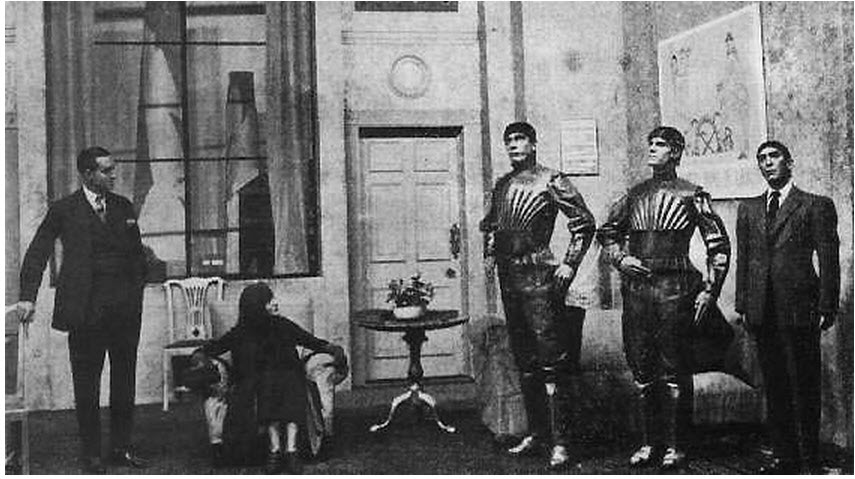How Powermat is Leading the
Charge for Wireless Electricity

The Tech Innovators Series is supported by Lenovo. Lenovo does not just manufacture technology. They make Do machines -- super-powered creation engines designed to help the people who do, do more, do better, do in brand new ways.
What's worse -- your smartphone running out of battery life, having to carry around a charger or not being able to find a power outlet to charge your phone when you're on the go?
Frankly, all of these situations are the pits. That's why wireless power pioneer Powermat is doing all it can to solve the on-the-go charging problem and make wired charging a thing of the past.
Mashable spoke with Powermat CEO Ran Poliakine about the company's technology and where it is going. Read on for a look at how he and his team are innovating in the wireless charging space.
A Mission To Make Wireless Charging Pervasive
Poliakine says that Powermat's mission has always been the same, that mission being:
"To create a wireless world where access to wire-free power is as pervasive as Wi-Fi -- a world where you expect to have wireless energy at your fingertips with Powermat technology at the core of the wireless power revolution."
"It all began with a simple realization that we are a society increasingly on the go and increasingly reliant on our smartphones for everything from keeping us connected, to providing us with news, entertainment, navigation and even waking us up in the morning," says Poliakine. "With this seemingly relentless increase in wireless data and 'power hungry' devices, it made no sense to me that we were still tied to our cords and chargers for power delivery. If our devices are wireless why isn't our ability to charge them?"
How Does It Work?
Powermat's technology stands firmly on the shoulders of giants like Nikola Tesla, who pioneered wireless energy transfer at the turn of the century. Powermat used Tesla's research as a basis for its own experimentation and development and came out on the other side with its own "supercharged" method for delivering wireless energy, says Poliakine. He explains in detail exactly how the wireless charging station works:
"Powermat works by utilizing magnetic induction to transfer energy. Specifically, energy is transferred from a transmitter embedded inside the mat to a receiver (which is connected to or embedded in the device) through a shared magnetic field. For today's most popular smartphones, the receiver is built into a back door that mimics the look and feel of the original one that comes from the manufacturer. In the case of an iPhone, the transmitter is built into a Powermat-enabled protective case. The receiver requires only a one-time installation before the device can be dropped on the Powermat for wireless power transfer."Communication between the mat (transmitter) and the receiver (personal device) allows the mat to deliver an exact amount of power for the proper length of time so that the transfer of power is safe and efficient and no energy is wasted. When a device reaches full charge, power automatically shuts off to that device. This not only saves energy, but it also prevents overcharging of the device's battery, which can shorten battery life."
Expansion Through Partnerships

"We are the first company to bring wireless power to consumers in a widely available, meaningful way via mainstream retail channels," says Poliakine, noting that Powermat's technology can be built directly into electronics of all kinds but also into virtually any surface. As a result, Powermat is able to create wireless energy "hubs" within homes, automobiles, airports, offices and other venues.
To take advantage of its technology's scalability and versatility, Powermat is working with several partners to implement the wireless ecosystem, which will "bring us that much further along in our mission to create a wireless world," says Poliakine. Here's a sampling of the partnerships Powermat currently has in play:
- Duracell: Procter & Gamble's Duracell and Powermat agreed to form a joint venture last month to globalize wireless power. The joint venture will combine P&G's strong consumer understanding, brand-building and go-to-market capabilities with Powermat's innovative technology, says Poliakine.
- General Motors: Rollout of new automobile models that incorporate Powermat wireless charging capability will begin in 2012, with the 2013 Chevy Volt.
- Teknion: Powermat and office furniture manufacturer Teknion created a line of wirelessly-enabled office furniture and accessories featuring an array of solutions for "smart" surfaces where users can drop and charge their favorite electronic devices on wirelessly enabled desks, office equipment and office seating solutions.
- Arconas: Powermat worked with airport seating manufacturer Arconas to install free wireless charging stations in several highly-trafficked airports, including Chicagoís O'Hare, New York's LaGuardia and Toronto's Pearson International airports.
Overcoming Challenges
Pioneering the wireless charging space hasn't been a walk in the park for the Powermat team. Poliakine pointed to scalability and education as key challenges the company has faced along the way, largely due to the fact that wireless charging technology was a foreign concept when they launched. Poliakine explains:
"When Powermat first launched in mid-October 2009, we created the category. It didn't exist before us. That's a very unique position to be in since there are so many unknowns in terms of consumer response and adoption. In the first three months of retail availability, we sold in excess of 750,000 Powermat products, with most stores experiencing severe out-of-stock shortages late in the season. We knew then that there was a genuine market and need for wireless power."What we struggled with was the ability of our small company to educate consumers fast enough about the availability of wireless power and [to] take our technology beyond the scope of early adopters and technology enthusiasts to the mass market. We needed more muscle, credibility and global reach."
With the Duracell partnership under its belt, Powermat expects to expand its reach globally and better educate consumers about the technology.
The Future of Wireless Charging
"You can expect to expect wireless power to go mainstream," Poliakine says. "What that means, in simpler terms, is that you'll soon have wireless power in those places where you most need it, including your car, airports, hotels, coffee shops, offices and right in your very own home. In five to 10 years, wireless charging will be the norm. When you check into a hotel room, for instance, you will find it there and in many other places."
"This is the dawn of a new era for wireless charging industry overall, Poliakine continues. "I truly believe that it is no less of a game changer than the electric lightbulb was in its day."












